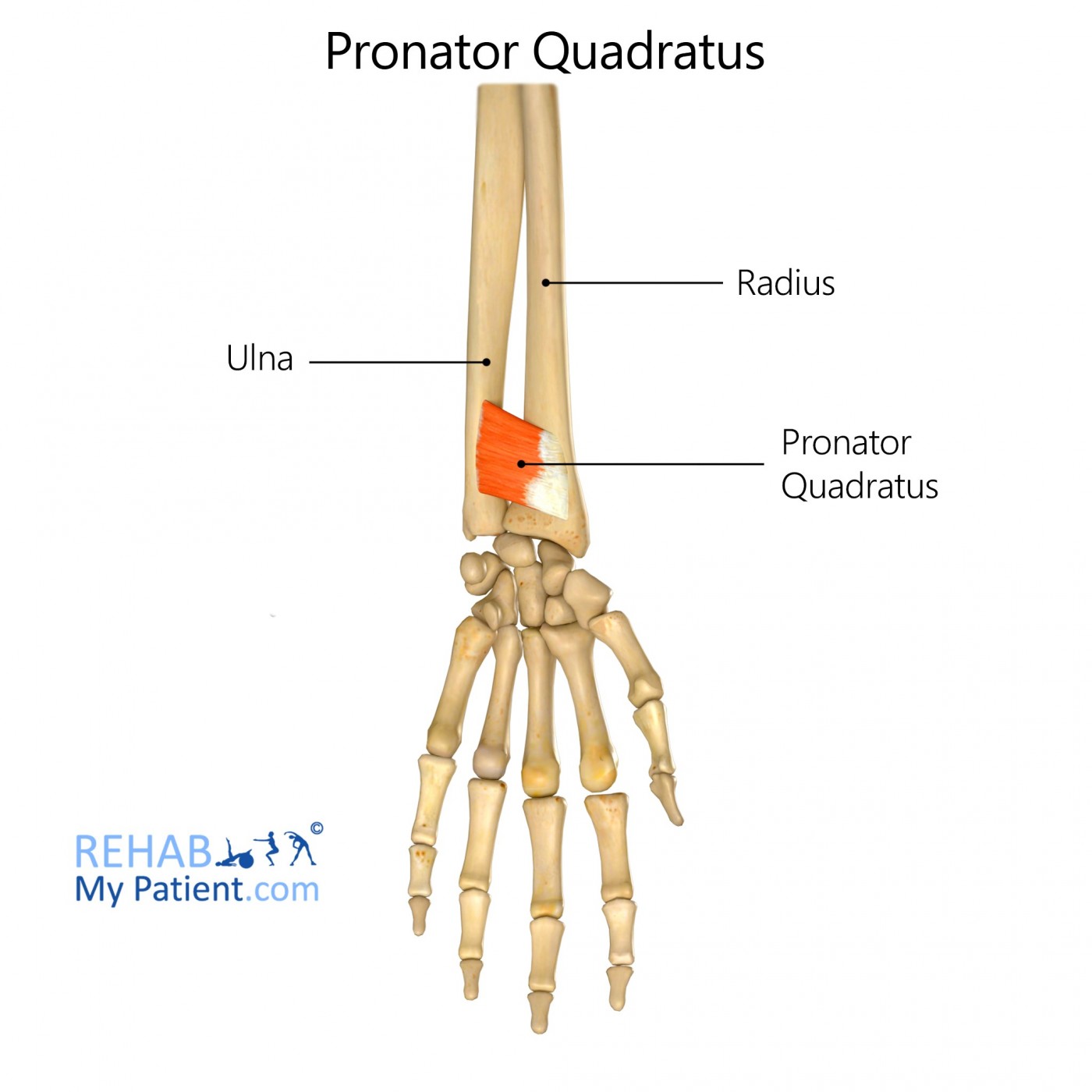Pronator Quadratus
Opublikowano dnia 28th Jul 2020 / Opublikowano w: Nadgarstek

General information
This square shaped muscle located on the distal forearm acts as a pronator for turning the hand. Since it is located on the anterior side of the arm, it is innervated from the branches of the median nerve and the anterior interosseous nerve. The arterial blood comes to the muscle from the interosseous artery.
Literal meaning
Square muscle that turns hand inward.
Interesting information
Many people are unaware of how the Pronator quadratus can become injured. Simply lifting a bag at work or home and extending it outward can cause the pain to form around the elbow. Some people have reported injuries from turning a screwdriver and extending the arm too far. There are several known instances where the muscles can tear, but they all relate to overextending the muscles. Strengthening the muscles in the arm is imperative to preventing any future damage to the Pronator quadratus. Common treatments for these injuries include the use of a wrist splint, icing of the area, and anti-inflammatory medications, such as ibuprofen.
Origin
Located on the oblique ridge of the anterior surface of the distal ulna.
Insertion
Distal quarter of the radius found on the anterolateral surface and to the area above the ulnar notch of the radius.
Function
Major pronator.
Stabilizes the separation of the ulna and radius when the hand is forced into the wrist joint.
Nerve supply
Median nerve C7-C8.
Blood supply
Radial artery.
Small recurrent branches out of the deep palmar arch.
Anterior interosseous artery.

Relevant research
A 2005 study set out to document the referred pain pattern of the pronator quadratus muscle. The pronator quadratus of 35 healthy adult volunteers was injected with saline and they then drew their pain on a pain diagram. The main pattern found, in 57% of cases, was pain spreading distally and proximally from the injection site, along the medial aspect of the forearm, while in 29% of cases pain spread distally to the third and/or fourth finger. The study concluded that where there is pain in the medial forearm and hand and no other neurological anomalies are observed, myofascial pain of the pronator quadratus should be considered.
Hwang, M., Kang, Y. & Kim, D. 2005. “Referred pain pattern of the pronator quadratus muscle.” Pain 2005 August 116 (3): 238-242.
Pronator quadratus exercises
Seated bicep curl
Seated bicep exercises using a resistance band help to increase the amount of muscle mass in the biceps and improve the total range of motion. Sit in a chair with knees bent and feet on the floor. Position the middle of the resistance band underneath of the feet. Grab onto the ends of the band in each hand. Keeping the back straight, curl the arms upward bending at the elbows until the forearms are perpendicular to the floor. Return to the original position. Repeat for 10 reps.
Seated shoulder side press
The seated shoulder exercises help to increase range of motion regarding the arms and shoulders. While sitting in a chair, sit on the middle of the resistance band. Holding the ends of the band in either hand and with the back straight, extend the arms to the sides until parallel with the shoulders. Lower them back down slowly. Repeat the exercise for 10 reps. The shoulders and arms will reap the benefits through extended range of motion and strengthening.
Zapisać się
Zarejestruj się już teraz, aby skorzystać z bezpłatnego okresu próbnego!
Zacznij korzystać z Rehab My Patient już dziś i zrewolucjonizuj proces przepisywania ćwiczeń, aby zapewnić sobie skuteczną rehabilitację.
Rozpocznij 14-dniowy bezpłatny okres próbny